Photo: Courtesy of artist
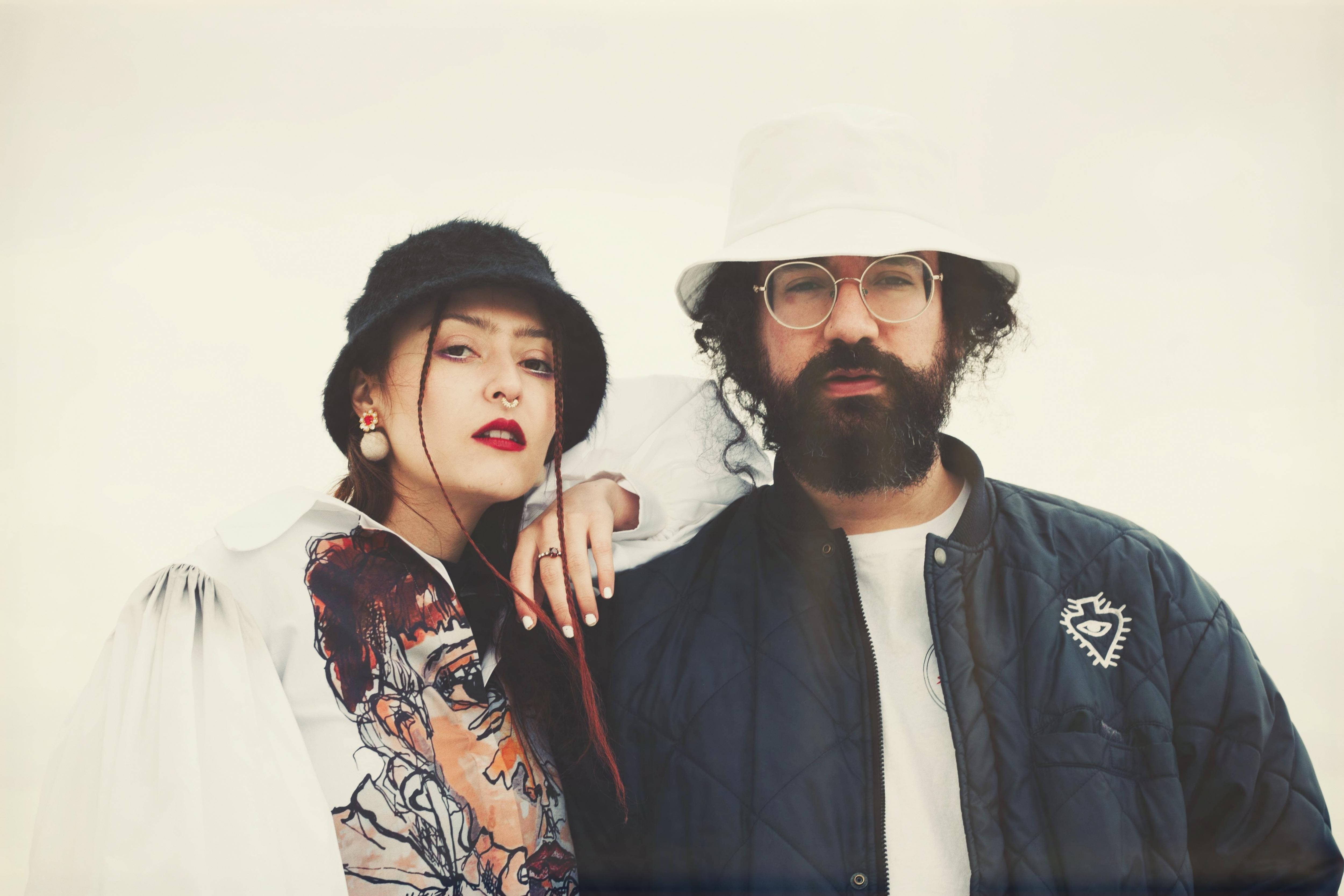
Salt Cathedral
news
Record Store Recs: Salt Cathedral Talk Favorite Brooklyn Indie Shops & How To Support Artists Of Color
"One of the most useful resources to support Black artists directly is Bandcamp," the Colombian electropop duo shared
With the unprecedented global disruption of 2020, it's important to support the music community however we can. With our series Record Store Recs, GRAMMY.com checks in with vinyl-loving artists to learn more about their favorite record stores and the gems they've found there.
Finding inspiration from tropical, danceable rhythms of their native Colombia, Bogotá-born, Brooklyn-based electropop duo Salt Cathedral create breezy, joyful music that's impossible to not dance to.
The band, consisting of Juliana Ronderos and Nicolas Losada, first met in the U.S. while attending Berklee College of Music. They first released music as Salt Cathedral in 2013 and were signed to the legendary electronic label Ultra Music in 2018. Their name is a nod to their shared hometown, inspired by the Catedral de Sal in Zipaquirá, an underground church built 200 meters underground in a former salt mine in the small town outside of Colombia's capital.
Preceded by three self-released EPs, their sunny debut album, CARISMA, featuring Ronderos' angelic vocals in both English and Spanish, dropped this May on Ultra Records. Originally slated to play SXSW and other major festivals and shows this year, and without these spaces to share and evolve their new music live, they decided to reimagine the tracks, with the help of some virtual collaborators, on the forthcoming CARISMA remix album. Their latest release, "CAVIAR *isolation mix*," offers a fun taste of the project.
For the latest edition of Record Store Recs, we caught up with the pair to get the scoop on their favorite record stores in New York and some of the gems they've found there. They also share useful tips on how to better support artists and business owners of color.
The Last One: Record Store Recs: Polo & Pan Take Us To Paris' Les Balades Sonores
Please pick three to five record stores you love. (The links below have online shopping options.)
The Mixtape Shop in Brooklyn, N.Y.
Human Head Records in Brooklyn, N.Y.
Face Records in Brooklyn, N.Y.
What do you love about these shops? What kind of goodies have you've found there?
Most of our favorite record shops are around where we live (in New York). The first one is The Mixtape Shop. It's in Bed-Stuy and you can find eclectic and new records of every style of music. The place is amazing and it's one of the prettiest record shops we've ever encountered. The curation is very selective, so when you pick a record there, it's because the owners believe in it. We love their Brazilian and African selection.
Our second favorite record shop is Human Head Records. Overall, it's a great place to find good records but, what's remarkable about them is their Latin section. It's pretty big and you can find records from Fania or Discos Fuentes to a really obscure Cuban santero record. In my experience, I don't very often see record shops with a big Latin section so, for a fan of that kind of music it's great.
Our final recommendation is Face Records. It's a record shop located in Williamsburg and it has a big selection of Japanese music. If you want to go further with and beyond [Haruomi] Hosono, [Ryuichi] Sakamoto or Yellow Magic Orchestra, this is place to go deep into Japanese music.
Sun Ra vinyl | Photo: Salt Cathedral
More: Record Store Recs: Öona Dahl Tells Us Her Favorite Places To Find Vinyl In L.A. And Berlin
For at least one of your favorite shops, share a recent record or two you bought there and what you love about the record/artist.
I got Sun Ra's Astro Black (1973) and Mariah's Utakata No Hibi (1983) from The Mixtape Shop. Those two records opened my mind about the possibilities and perspectives of music. With those two records, I realized that you can challenge people's views with music. That's pretty powerful.
What's an upcoming/recent release you have your eyes on picking up and why?
Nothing particularly, but we always check what [London's] Soundway Records is releasing. They have been very instructive to us and we pretty much love everything they had released.
A growing vinyl collection | Photo: Salt Cathedral
How would you describe your record collection in a few words? When did you first start collecting?
I started collecting just a year ago. I wasn't into collecting at all [before]. I love music and I realized that collecting is one of the many ways to discover new music, from the past or present. I would describe my collection as eclectic; all over the place and driven by curiosity.
And More: Record Store Recs: Chulita Vinyl Club On The Best Music Stores In L.A., Oakland, Austin & Beyond
What was the first CD and vinyl you remember buying?
My first CD was Californication by Red Hot Chili Peppers (1999) and vinyl was Hot Rats by Frank Zappa (1969).
Learn: How Black Trans Artists Are Fighting To Achieve Racial Justice & Amplify Queer Voices
What can music fans do to better support artists and business owners of color?
One of the most useful resources to support Black artists directly is Bandcamp. There is an incredible site called blackbandcamp.info offering a crowdsourced list of Black artists on the platform, which music fans can search by genre and location. The beauty of Bandcamp really helps you find and buy directly from these artists, making sure that you're not supporting a big corporation or label but the actual musicians.
This article from Brooklyn Vegan is a great resource to find Black-owned record stores—it doesn't just list the record stores but speaks about their story. And the best way to support Black business owners is to research what is local to you, to your city or your neighborhood. We live in Bedford-Stuyvesant in Brooklyn, for example, and Black-owned restaurants and stores have signs that say so. Pay attention, and make sure that when you have the option, you choose to support a Black-owned business. The times are changing and the Black community needs all our support. Look to support local because small, family-owned and independent businesses need it the most.
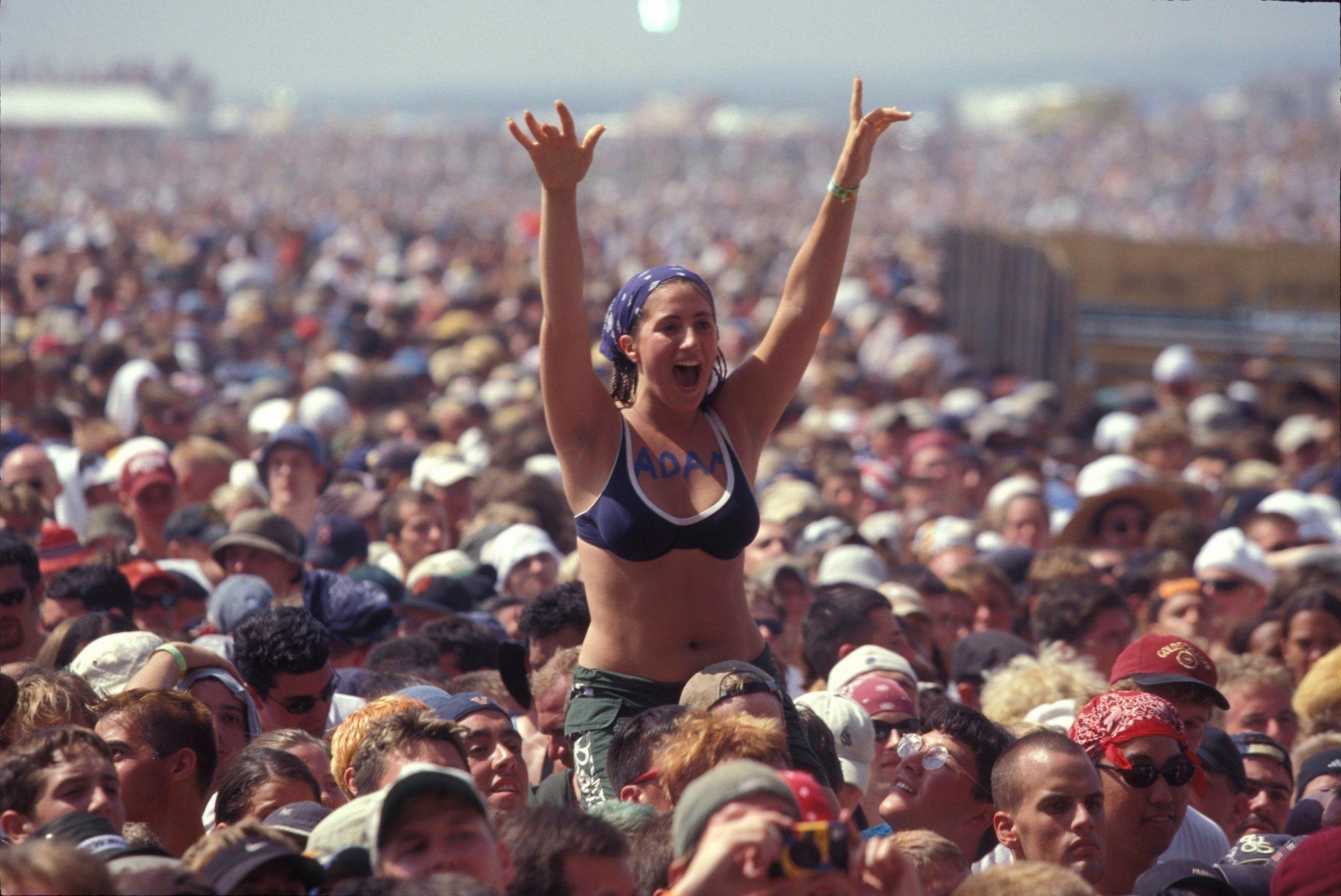
Photo: Getty Images/John Atashian
feature
On This Day In Music: Woodstock '94 Begins In Upstate New York
Held 30 years ago Aug. 12-14, Woodstock '94 featured an eclectic (and muddy) lineup that launched Nine Inch Nails, Green Day and others into the limelight.
Woodstock '94 is no middle child music festival. While not as groundbreaking as Woodstock '69 or as infamous as Woodstock '99, Woodstock '94 boasts a unique legacy that deserves recognition.
Held Aug. 12-14 in the Hudson Valley town of Saugerties, New York, Woodstock '94 was set to commemorate the silver anniversary of the original Woodstock festival in 1969. Nodding to its origins in '69, Woodstock '94 was billed as "2 More Days of Peace and Music" (a third day of the festival was eventually added).
Woodstock '94 featured a wide range of acts that both reflected the nostalgia of Woodstock '69 and highlighted a myriad of new groups. Original Woodstock performers such as Crosby, Stills & Nash (minus Neil Young) and Santana topped the bill, and now-household names including Green Day and Red Hot Chili Peppers performed some of their earliest festival sets.
Even Bob Dylan, who initially declined an appearance at Woodstock '69 despite living near the festival at the time, had a change of heart and agreed to play at Woodstock '94.
It seemed that everyone wanted to capture a sliver of the magic from the original Woodstock. Although roughly 164,000 tickets were sold, the actual number of attendees exceeded 350,000 (surpassing even Coachella 2024's attendance rates).
Spirits were high as the festival opened on Friday with dry, sunny skies highlighting performances from Sheryl Crow, Collective Soul, and others. By the weekend, the weather took a turn and transformed the festival grounds at Winston Farm in Saugerties into a giant muddy puddle. Although Woodstock '69 was also rainy and mud-filled, the madness that ensued at Woodstock '94 led it to be dubbed "Mudstock."
As Primus performed "My Name Is Mud" on Saturday, festival-goers seized the opportunity to fling the wet dirt at the band on stage.
"Once I started singing the words to "My Name Is Mud," all of a sudden huge chunks of sod started flying my way and it was pretty frightening," Primus' lead singer told Billboard 20 years later. "I still have those [speaker] cabinets to this day, and those cabinets still have mud in them."
With high energy from Friday's acts and some mud-induced chaos, attendees were buzzing with anticipation and excitement for the rest of the weekend. The party atmosphere continued throughout day two — and not solely because Blind Melon lead vocalist Shannon Hoon strolled on stage tripping on acid, wearing his girlfriend's dress.
Aerosmith may have been day two headliners, but Nine Inch Nails' 15-song set remains a highlight of Woodstock '94. The band drew the biggest crowd of the festival, and were catapulted into wider mainstream visibility. Taking advantage of the unpredictable weather, then-bassist Danny Lohner pushed lead vocalist Trent Reznor into the mud, prompting Reznor to retaliate. The other members of the band soon joined in on the fun, strutting onto the stage covered in mud.
Opening with Pretty Hate Machine's "Terrible Lie," NIN turned the massive audience into a giant mosh pit and maintained that high energy until the end of the set. While the band faced technological difficulties onstage, it only seemed to enhance their raw, gritty image.
The set was so celebrated that it is forever memorialized in the Rock & Roll Hall of Fame, with art installations featuring a life-sized mannequin replica of Reznor singing into the microphone and his keyboard, both covered in mud.
By day three, Woodstock '94 was clearly becoming an iconic music festival that would be discussed for years to come. If Saturday's mud-slinging electric performances weren't enough, the final day of the festival featured performances from Green Day, Red Hot Chili Peppers, Bob Dylan, Santana, and others.
When Green Day — fresh off the success of their third studio album Dookie — took the stage, all hell broke loose. While the band was and continues to be known for their rowdy live sets, their performance at Woodstock '94 remains unmatched.
By the time Green Day started performing, the fairgrounds had turned into a full-blown mud fight. The band tried to push through the performance and embrace the chaos, but the set came to an abrupt stop when lead singer Billie Joe Armstrong told the crowd, "Everybody say shut the f— up and we’ll stop playing." When the crowd shouted the phrase back, Armstrong said goodbye on behalf of the band, and the rest of the group fled the stage.
By the end of the performance, lead singer Billie Joe Armstrong had lost his pants and the band had to be escorted out of the festival grounds by a helicopter. On their way off the stage, security confused mud-covered bassist Mike Dirnt for a crazed fan and tackled him, leaving him with five fewer teeth than he started the set with.
"He actually sheared my teeth, and I blew like five teeth. Only one of them died. I fixed the rest of them, but he all sheared up the back of my teeth," Dirnt confessed to The Aquarian in 2013. "It was horrible. But the great thing about it is that I was able to get out of there, and I'd do it again tomorrow if I had to."
Peter Gabriel closed out the weekend by remaining true to the original mission of the festival, offering fans peace filled with good vibes. Gabriel's music, though deeply contrasting with the hard rock and punk acts that dominated the festival, provided a flawless end to the chaos that had unfolded over the past three days.
While the 1994 installment of Woodstock hasn't basked in the same spotlight as its 1969 and 1999 siblings — the latter of which has been the subject of two documentaries in as many years — it remains far from forgotten.
Woodstock '94 stands as one of the legendary music festivals of all time. Although the rain may have soaked the grounds, turning it into a muddy catastrophe, it also nourished the roots of some of the most iconic musical acts and sent them into the mainstream media. The festival was more than just a series of performances, but rather a unique cultural event.
Latest Music Festival News
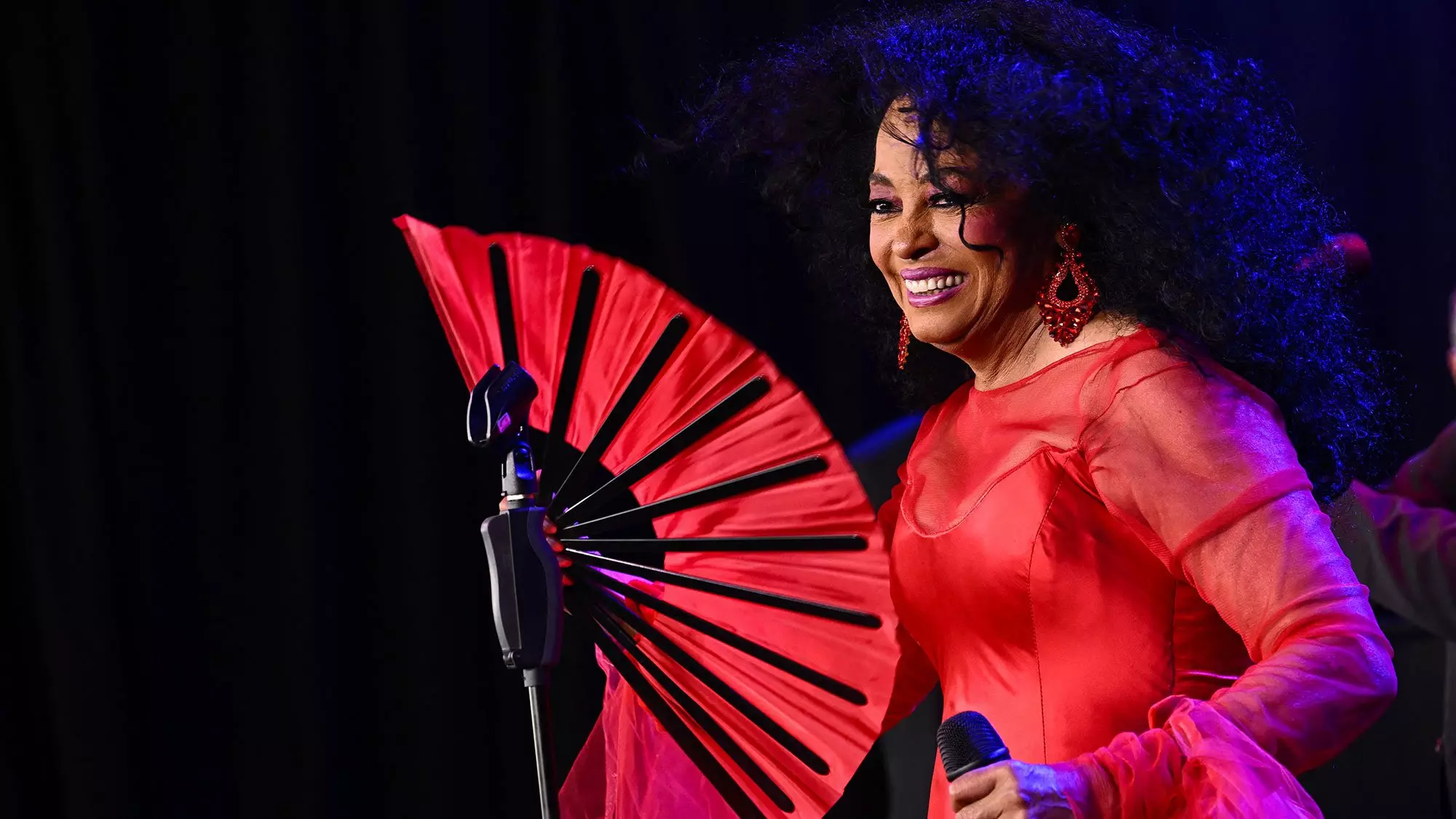
Get Ready For Fool In Love Fest With This Soulful Playlist: Hits & B-Sides From Chaka Khan, Thee Sacred Souls, Smokey Robinson & More
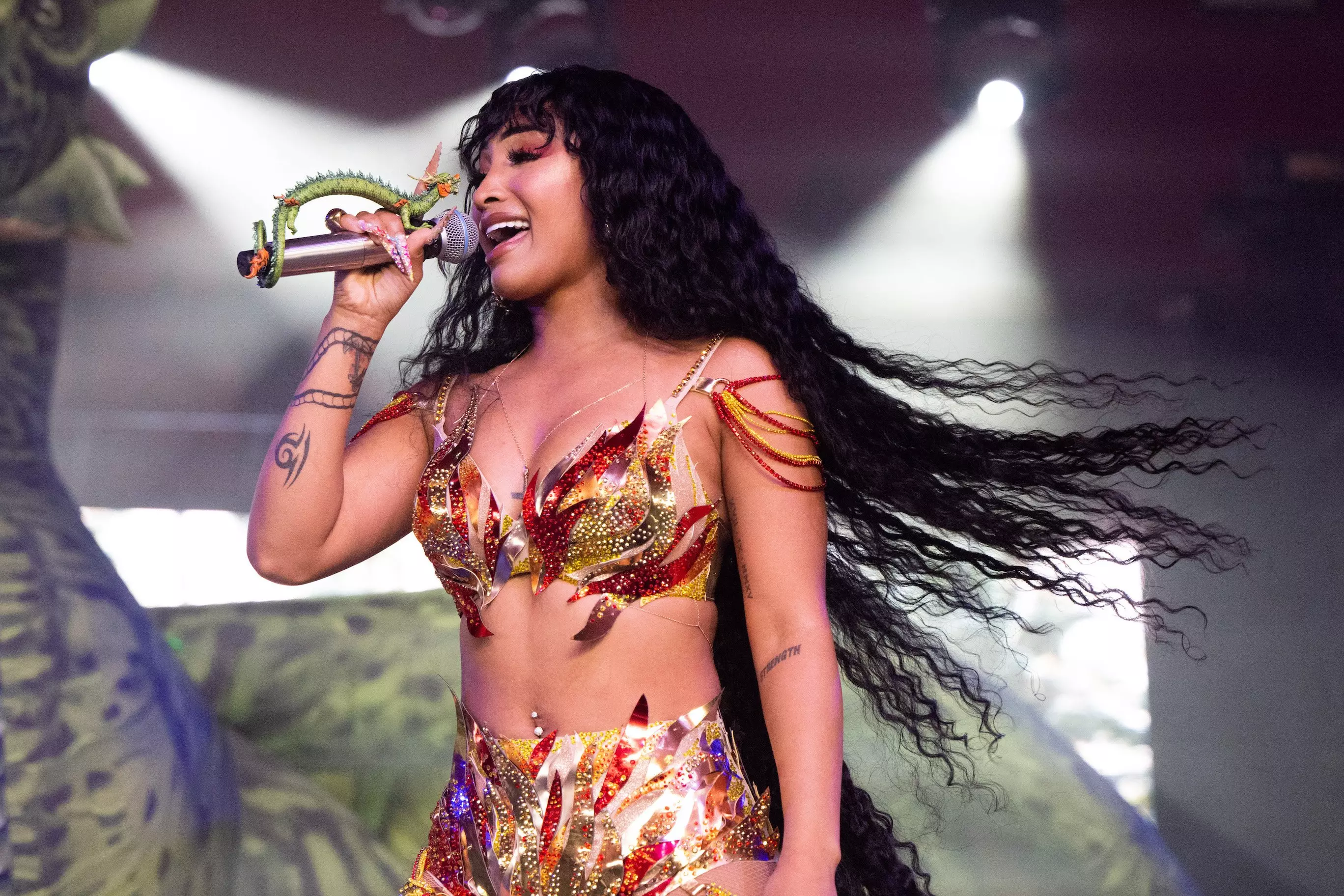
8 Can't-Miss Acts At Afro Nation Detroit 2024: Shenseea, Ayra Starr, Kizz Daniel & More
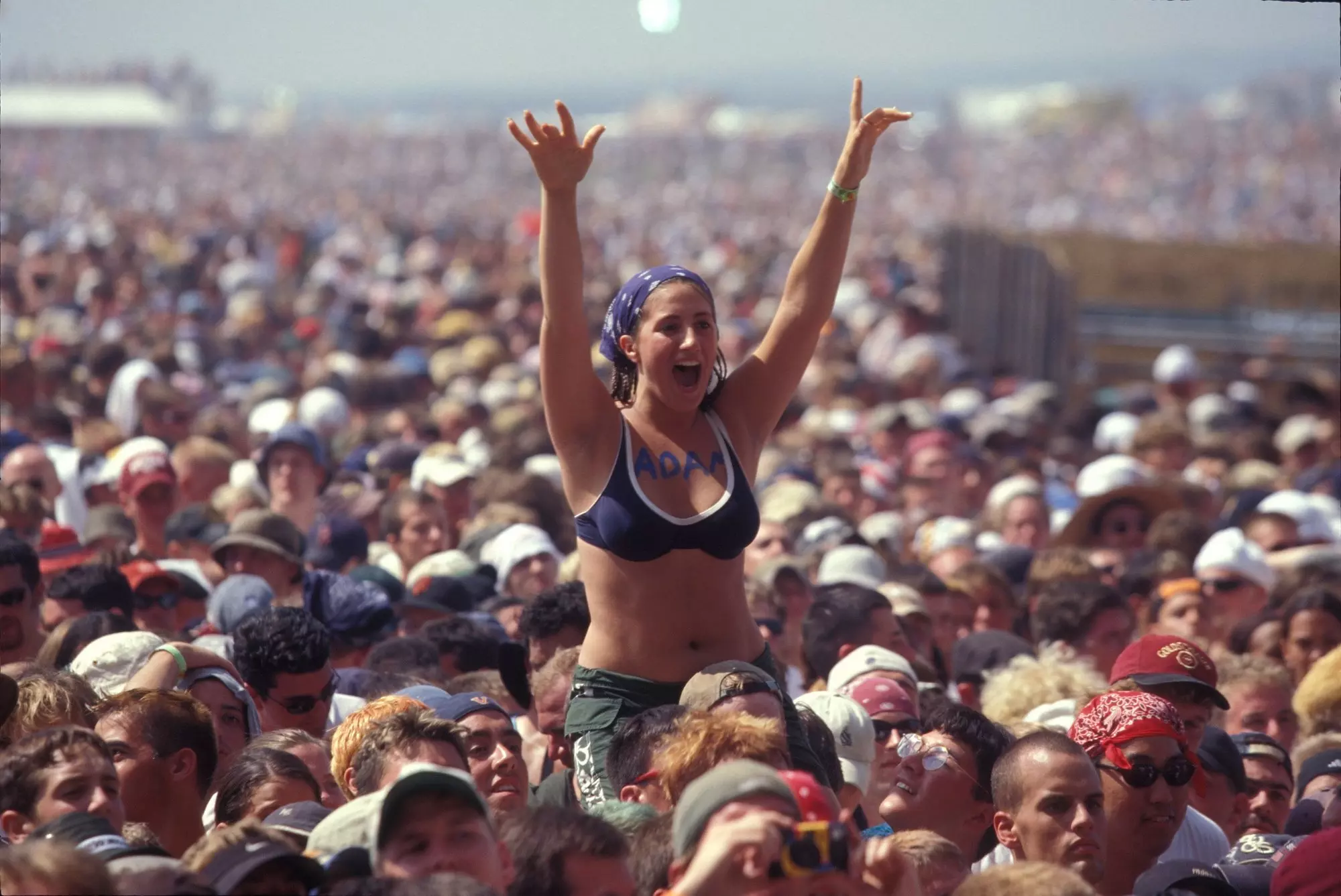
On This Day In Music: Woodstock '94 Begins In Upstate New York
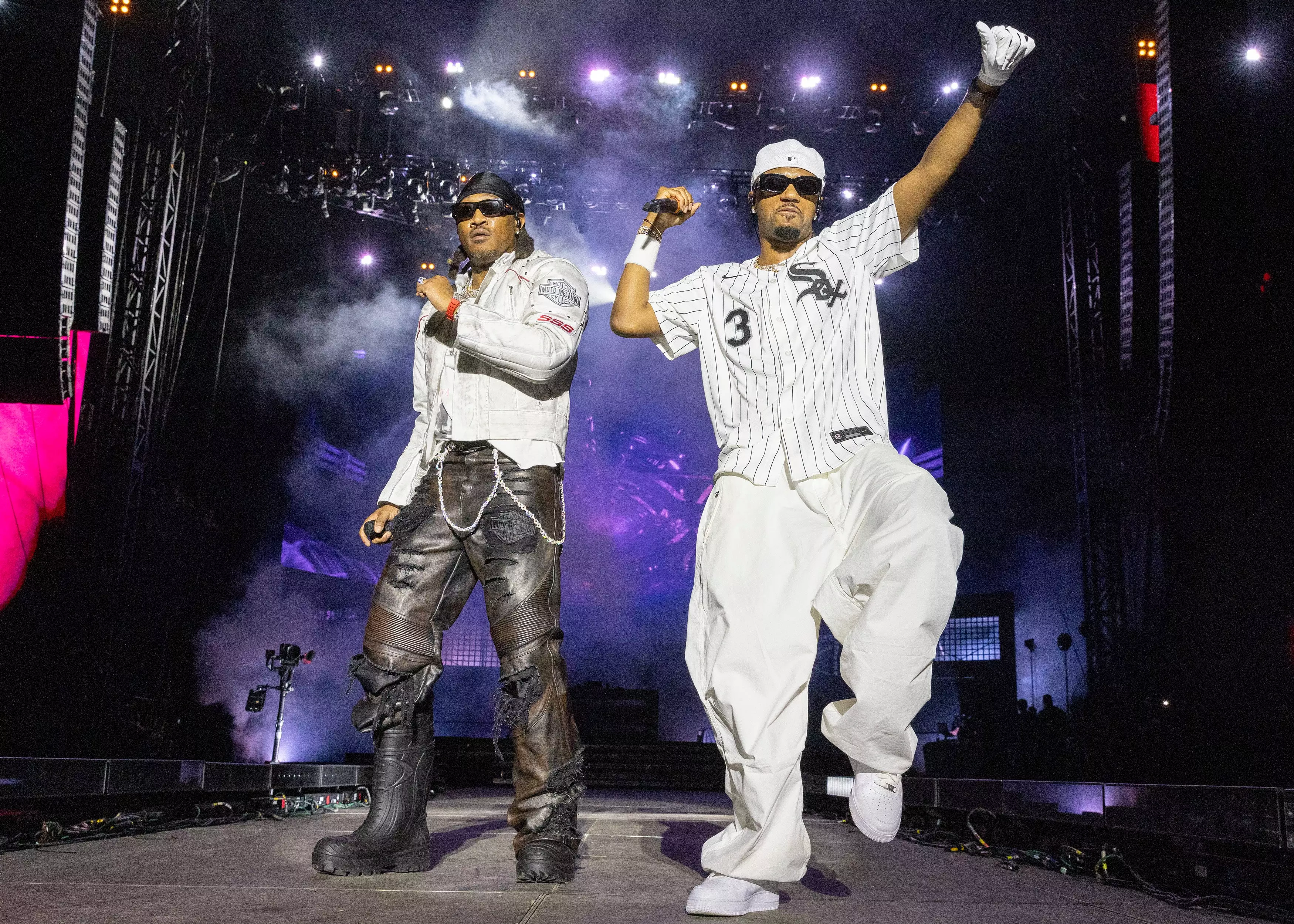
7 Stellar Sets From Lollapalooza 2024: Megan Thee Stallion, Future x Metro Boomin & More
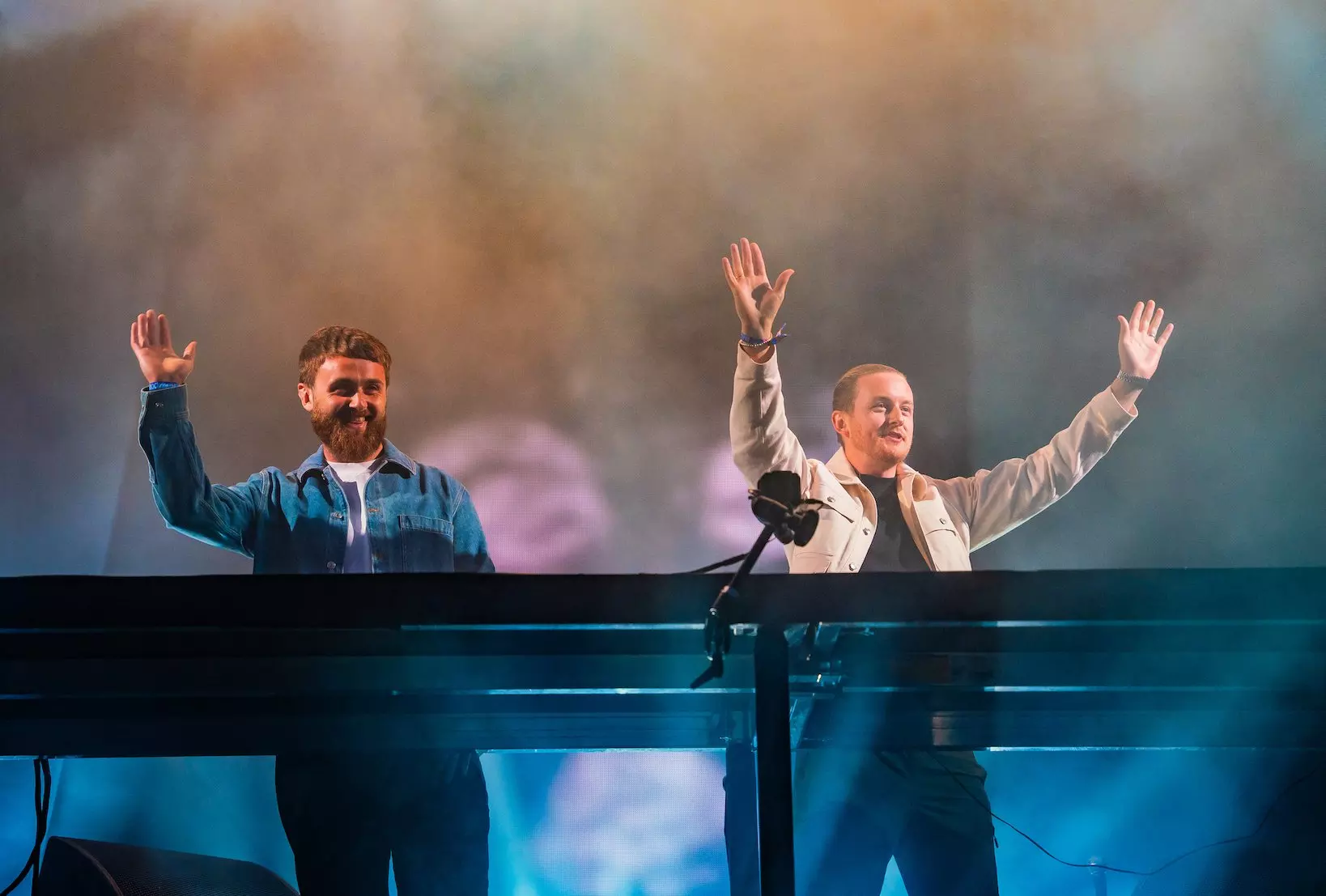
10 Cant-Miss Sets At HARD Summer 2024: Disclosure, Boys Noize, INVT & More
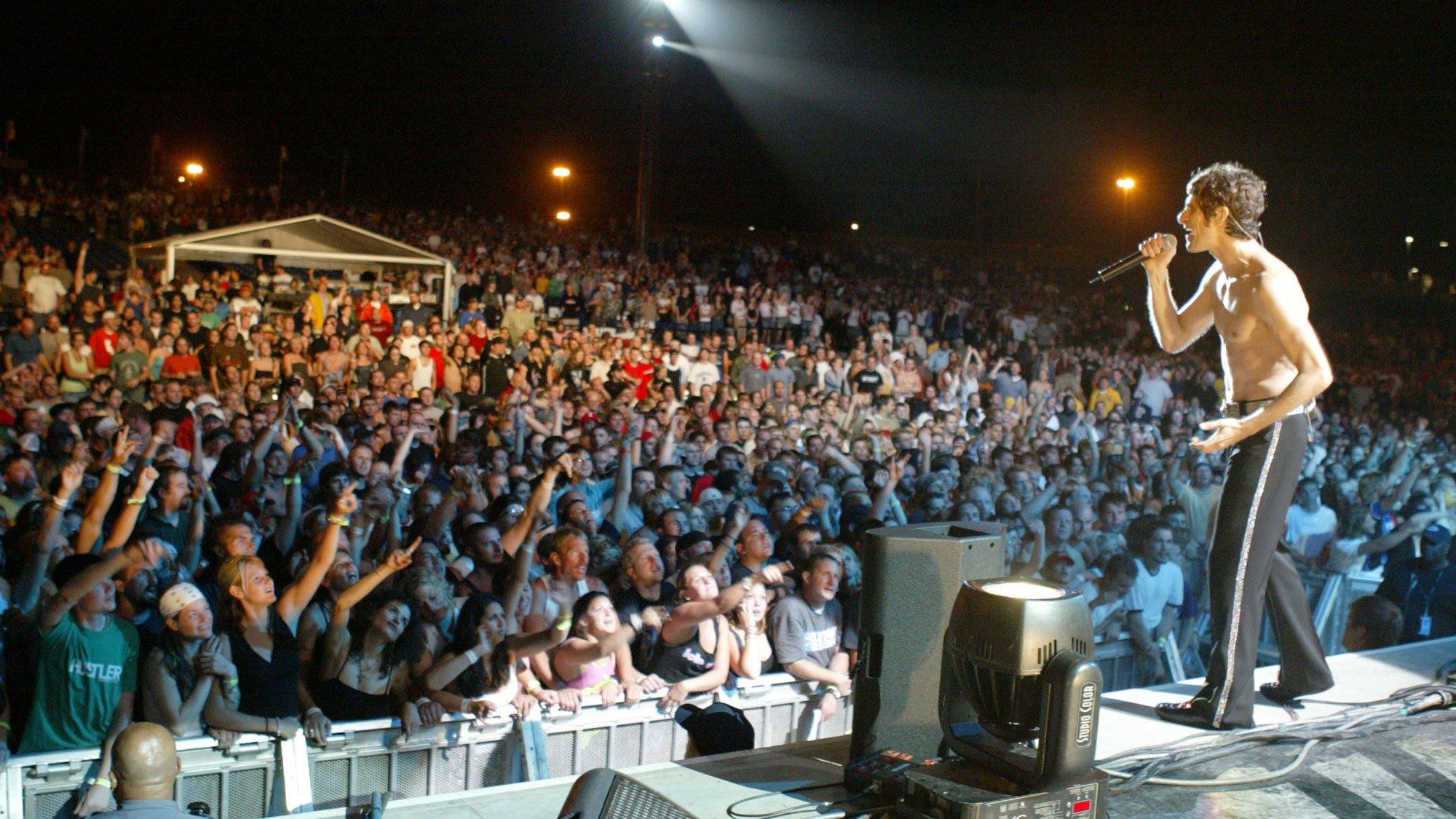
Photo: J. Shearer/WireImage/GettyImages
list
'Lolla: The Story of Lollapalooza' Recounts How An Alt Rock Fest Laid The Blueprint For Bonnaroo & More
A new three-part documentary on Paramount+ traces the origin of Lollapalooza from its early days as a traveling alt-rock showcase initially conceived as a farewell tour for Jane's Addiction, to the three-day Chicago-based festival that exists today.
Few music festivals have had the cultural impact of Lollapalooza.
Conceived in 1991 as a farewell tour for Jane's Addiction by lead singer Perry Farrell, the festival quickly became a traveling showcase for alt-rock and counterculture. Its eclectic lineups, which also included punk, metal, and hip-hop acts, helped define a generation's musical tastes.
A new, three-episode documentary, "Lolla: The Story of Lollapalooza," takes an in-depth look at the festival's journey over three decades. From its early days of bringing together alt acts including Nine Inch Nails, Living Colour, Pearl Jam, and the Beastie Boys, Lollapalooza has evolved into what it is today: a three-day festival based in Chicago's Grant Park since 2005. The festival remains an enduring celebration of alternative music.
"Lolla" explores how Lollapalooza defied expectations by both embracing and helping shape the emerging youth culture of the '90s — a rebellious, introspective shift from the flashy excess of the '80s. The docuseries highlights the festival's influence through a trove of archival footage and exclusive interviews with Lollapalooza co-founders, show promoters, bookers, MTV hosts. Of course, "Lolla" features a who's who of '90s-era rockers — including Farrell himself, Flea from Red Hot Chili Peppers, Tom Morello of Rage Against The Machine, Trent Reznor from Nine Inch Nails, Donita Sparks from L7, Ice-T.
To watch "Lolla" is to open a time capsule for alternative culture, one where the stage becomes a symbol of generational change. Read on for five takeaways from the documentary, which is now streaming on Paramount+.
The Reading Festival Served As Inspiration
For their farewell tour, Jane's Addiction decided to emulate the UK Reading Festival's approach to curating live music and alternative acts in a multi-day, open-air forum (where bands like the Buzzcocks and Pixies played to crowds of 40,000).
Jane's Addiction had been scheduled to play the 1990 Reading Festival, but Farrell partied too much the night before after a club gig and lost his voice, and the band had to cancel. Drummer Stephen Perkins and future Lollapalooza co-founder Marc Geiger decided to check out the event anyway, which planted the seed for the future tour.
"Reading was a cornucopia of artists, and scenes, and curation, and it was such a vibe," recalled Geiger in an interview scene from the doc. "I remember saying, 'Perry, we have to do it.'"
Farrell was game after missing his chance to see Reading first-hand. So Lollapalooza co-founders Geiger, Don Muller and Ted Gardner, who was also Jane's Addiction band manager, got to work emulating the Reading model. In addition to live music, Farrell wanted something "completely subversive" with booths to engage festival goers with everything from henna tattoos and art galleries, to nonprofit and political organizations like Greenpeace, PETA, the Surfrider Foundation, and even voter registration for the Rock The Vote campaign. The result was art and activism combined with commerce.
Lolla Was Born From The Death Of Jane's Addiction
Although Jane's Addiction had a big buzz with their third album, Ritual de lo Habitual, the band was on the edge of dissolution. "We really couldn't stand each other," admitted Farrell. Ready for his next act, Farrell saw the opportunity to end on a high note with Jane's Addiction. "The best work we did, we left on the stage at Lolla," he said in the doc.
In the early '90s, alternative acts were not selling out massive venues. Organizers were on edge, hoping fans would buy tickets and show up to not one, but 28 U.S. tour dates featuring the seven-act lineup for the first-ever Lollapalooza.
What nobody expected was the watershed success. The first show saw fans sweat it out to see their favorite acts in Phoenix, on a day with temperatures well over 100 degrees. Nine Inch Nails' equipment melted in the heat, leading the band to destroy their failing gear before walking off the stage.
Despite initial hiccups, the tour wasn't hindered. Lollapalooza's first year sold out in a majority of venues holding 15-18,000 people, driven largely by word-of-mouth and favorable coverage by MTV.
"I think everybody knew and ultimately felt, 'wow, I'm sort of lucky to be here — I'm part of something,'" recalled Geiger in the doc. "It was bigger than anything these artists or fans had seen at that time."
Lollapalooza '92 further mixed genres on the main stage — like gangsta rap (Ice Cube), grunge (Pearl Jam) and shoegaze (Lush) — while greatly expanding the line-up on a side stage upon which Farrell and Perkins introduced their new band Porno For Pyros, alongside many other acts. Lollapalooza's model was born.
Early Years Embraced Racial Inclusivity, But Lagged Gender-Wise
Right from the start, Lollapalooza organizers mixed up the bill beyond white artists that traditionally headlined rock concerts long before and after Jimi Hendrix performed at Woodstock and Monterey Pop. Part of why Lollapalooza thrived is the inclusion of bands like Ice-T's Body Count, Fishbone, and Living Colour — favorite headliners during the early tours.
Rage Against The Machine guitarist Tom Morello credited Living Colour with helping build "the alternative arc" and opening doors for Rage. "Without Living Colour, Rage Against The Machine doesn't get a record deal. Ever," Morello said.
A big moment came near the end of the '91 tour when Ice-T and Farrell squared off to cover Sly and the Family Stone's "Don't Call Me ******, Whitey" in which they tersely trade verses, then end up tangoing across the stage. It was a provocative performance that grabbed headlines and the audience's attention months after the high profile police beating of Rodney King in Los Angeles. In '92, Soundgarden showed solidarity with Body Count by performing their controversial track "Cop Killer" with their guitarist Ernie C onstage in Miami.
While Lolla embraced racial diversity, the early line-ups were male-dominated. Lone female act Siouxsie and the Banshees were a favorite in '91 and later Lollapalooza main stage artists, like Sonic Youth, Babes In Toyland, Lush, and the Breeders — which had more if not all female members — were outnumbered by their male counterparts.
Read more: 6 Female-Fronted Acts Reviving Rock: Wet Leg, Larkin Poe, Gretel Hänlyn & More
Donita Sparks noted that L7 got booked in '94 only after they fired off a bluntly worded fax to the organizers. "We got the offer," Sparks said, "but we had to push the issue. And we had to fight for it. 'Cause that's how much we wanted to be on Lollapalooza, and more importantly, that's how much we felt we deserved to be on Lollapalooza.
Female artists would eventually receive their Lolla dues, with Billie Eilish, Lorde, HAIM, Miley Cyrus and Karol G performing as festival headliners, and artists like Lady Gaga starting out as side stage artists before exploding in popularity and returning to headline the fest a few short years later.
It Became A Victim Of Its Own Success
Lollapalooza from years '91 to '93 were the purest in terms of alt-rock acts, but as the event drew a wider range of talent and demand, it began to suffer a bit of an identity crisis. After all, it's hard to be a beacon for the underground scene once that culture is above ground.
By Lolla '94, attendance set records and alt-rock had hit the mainstream while grunge peaked and critics bemoaned its growing conventional status. Former second stage booker John Rubeli revealed that Nirvana turned down a $6 million offer to headline the '94 tour because of frontman Kurt Cobain's fear of selling out. Cobain's suicide a few short weeks later changed the scene.
In '95, the festival returned with more indie bands on the mainstage, but some were eclipsed by bigger artists like Coolio, who drew a bigger crowd to the parking lot side stage. Increased popularity drove commercial sponsorship, and the event became more expensive. Ticket sales dropped. Then in '96, Farrell quit his involvement with the festival for a year in protest over the booking of Metallica, whose aggressive music and audience he felt were out of step with his vision.
"I felt disrespected," Farrell said. "I'm not putting this thing together to make the most money. I'm putting this thing together to make the most joy."
Upon his return in 1997, Farrell's inclusion of electronic acts like the Orbital and the Prodigy were, to some ears, ahead of the curve. The festival then went on a six-year hiatus.
Lollapalooza returned on shaky legs for its 2003 tour, which included Audioslave, Incubus, the Donnas, and the reunion of Jane's Addiction. But it was truly reborn in 2005 as a three-day event in Chicago through concert promoters C3 Presents (who co-executive produced the "Lolla" doc). Admittedly, some of the 21st century headliners like Lady Gaga, Miley Cyrus, Journey, and Paul McCartney would never have fit the '90s festival bill.
Times have changed and, today, the festival has embraced its conventional success while retaining its original genre-spanning reach with the Killers, Melanie Martinez, Skrillex, and Tyler, the Creator included on this summer's lineup.
Lolla Was A Model For Coachella, Bonnaroo, And Beyond
Prior to the arrival of Lollapalooza, rock festivals were usually single weekend events that took place in a fixed location, like Woodstock in '69, Steve Wozniak's US Festival in '82 and '83, and European festivals like Reading. "I just think it's the first American, truly eclectic concert series since Woodstock," said Ice-T. "And even Woodstock wasn't as eclectic because Woodstock was pretty much all rock."
Lollapalooza's successful tour format inspired other popular tours and live events, especially in the mid-'90s. During the festival's break during the late '90s and early 00's, niche festivals like Ozzfest, Vans Warped Tour, and Lilith Fair stole the show. These festivals not only continued Lollapalooza's legacy by bringing diverse genres to cities across the country, but transformed the live music scene into a cultural phenomenon.
While epic, genre-spanning weekend festivals like Coachella and Bonnaroo have been raging since the early aughts, Lollapalooza first proved that a seemingly radical idea could grow and thrive. Incorporating a mix of rock, hip-hop, electronic, and alternative acts, inclusivity and mobility became a festival blueprint. Today, Lollapalooza is tapping into international audiences and local music scenes with versions of the festival in Argentina, Berlin, Stockholm, Paris, and even Mumbai.
Lollapalooza's success proves that the media and music industry often don't realize the size and passion of certain scenes and subcultures until they're brought together in the right setting. By uniting diverse musical acts and their fans, Lollapalooza highlights eclectic talent but also shows just how much people crave that representation and diversity.
Music Festivals 2024 Guide: Lineups & Dates For Lollapalooza, Coachella, Bonnaroo & Much More

Photo: Jeff Kravitz/FilmMagic
video
GRAMMY Rewind: Kendrick Lamar Honors Hip-Hop's Greats While Accepting Best Rap Album GRAMMY For 'To Pimp a Butterfly' In 2016
Upon winning the GRAMMY for Best Rap Album for 'To Pimp a Butterfly,' Kendrick Lamar thanked those that helped him get to the stage, and the artists that blazed the trail for him.
Updated Friday Oct. 13, 2023 to include info about Kendrick Lamar's most recent GRAMMY wins, as of the 2023 GRAMMYs.
A GRAMMY veteran these days, Kendrick Lamar has won 17 GRAMMYs and has received 47 GRAMMY nominations overall. A sizable chunk of his trophies came from the 58th annual GRAMMY Awards in 2016, when he walked away with five — including his first-ever win in the Best Rap Album category.
This installment of GRAMMY Rewind turns back the clock to 2016, revisiting Lamar's acceptance speech upon winning Best Rap Album for To Pimp A Butterfly. Though Lamar was alone on stage, he made it clear that he wouldn't be at the top of his game without the help of a broad support system.
"First off, all glory to God, that's for sure," he said, kicking off a speech that went on to thank his parents, who he described as his "those who gave me the responsibility of knowing, of accepting the good with the bad."
Looking for more GRAMMYs news? The 2024 GRAMMY nominations are here!
He also extended his love and gratitude to his fiancée, Whitney Alford, and shouted out his Top Dawg Entertainment labelmates. Lamar specifically praised Top Dawg's CEO, Anthony Tiffith, for finding and developing raw talent that might not otherwise get the chance to pursue their musical dreams.
"We'd never forget that: Taking these kids out of the projects, out of Compton, and putting them right here on this stage, to be the best that they can be," Lamar — a Compton native himself — continued, leading into an impassioned conclusion spotlighting some of the cornerstone rap albums that came before To Pimp a Butterfly.
"Hip-hop. Ice Cube. This is for hip-hop," he said. "This is for Snoop Dogg, Doggystyle. This is for Illmatic, this is for Nas. We will live forever. Believe that."
To Pimp a Butterfly singles "Alright" and "These Walls" earned Lamar three more GRAMMYs that night, the former winning Best Rap Performance and Best Rap Song and the latter taking Best Rap/Sung Collaboration (the song features Bilal, Anna Wise and Thundercat). He also won Best Music Video for the remix of Taylor Swift's "Bad Blood."
Lamar has since won Best Rap Album two more times, taking home the golden gramophone in 2018 for his blockbuster LP DAMN., and in 2023 for his bold fifth album, Mr. Morale & the Big Steppers.
Watch Lamar's full acceptance speech above, and check back at GRAMMY.com every Friday for more GRAMMY Rewind episodes.
10 Essential Facts To Know About GRAMMY-Winning Rapper J. Cole
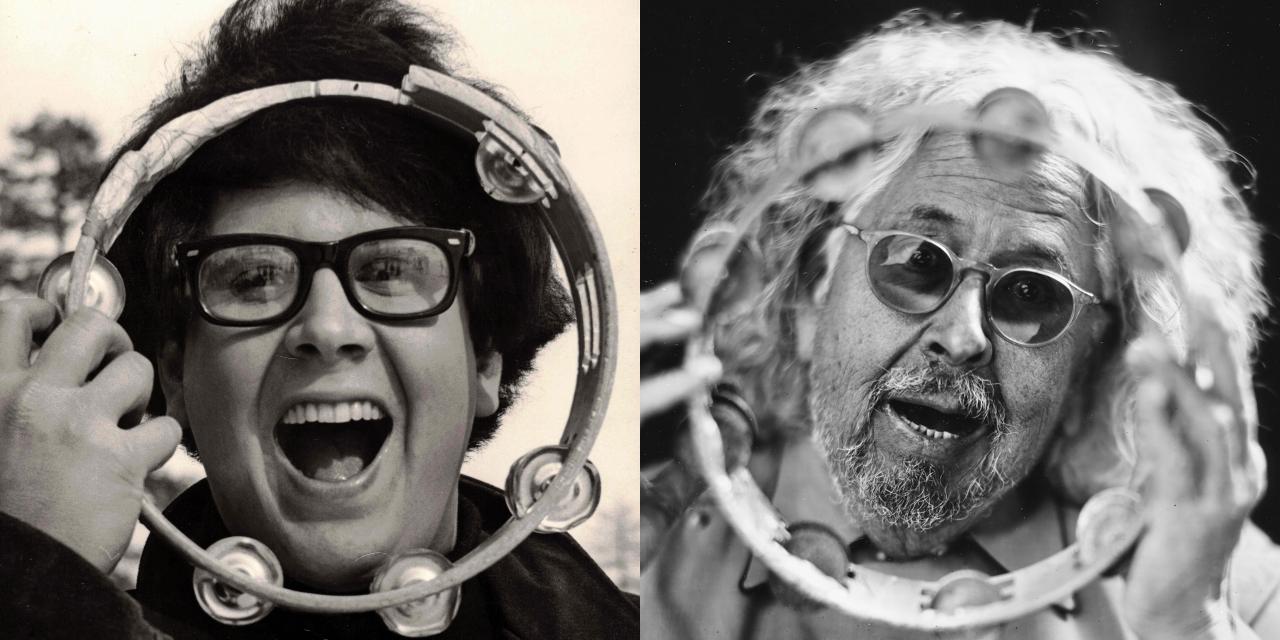
Photos (L-R): David Payne, Blake Wylie
interview
Living Legends: After The Turtles, Flo & Eddie & The Mothers Of Invention, Mark Volman Is 'Happy Forever'
Decades of industry upheaval and a Lewy body dementia diagnosis haven't dampened Mark Volman's spirits: in his new memoir, 'Happy Forever,' the singer looks back on "every little piece of the pie" with pride.
Living Legends is a series that spotlights icons in music still going strong today. This week, GRAMMY.com spoke with Mark Volman, an original member of the Turtles and one half of Flo & Eddie, who had a memorable stint with Frank Zappa and the Mothers of Invention.
Volman’s reconstituted version of the Turtles is currently on the "Happy Together" tour with other 1960s acts; his new memoir, Happy Forever, is available now.
Most remember the Turtles as straight-laced hitmakers of the mid-'60s, full stop. But breeze through YouTube, and it's abundantly clear: there was manic energy under the hood ready to blow.
Take their TV performance of their signature song "Happy Together" — the one viewed 26 million times. While the band mimes along without incident, Mark Volman prances around, wildly swinging a French horn; it's as if he'd raided the instrument closet, wandered onstage and nobody asked him to leave.
When he locks eyes with lead singer Howard Kaylan — and puts the bell of the horn on Kaylan's head — there seems to be a flash of twisted, kindred recognition between the two men. In another TV performance, Kaylan's dressed like an austere 19th century banker while Volman wears a comically large, polka-dotted bowtie with matching hat.
When surveying the sea of bowl-cutted guitar combos, Frank Zappa — the patron saint of mischief — clearly sensed these guys had a screw loose. Hence, when the Turtles flamed out, Volman and Kaylan's stories were just getting going.
"I think our sense of humor was let loose when we joined Frank's group," Volman tells GRAMMY.com. "The mischief that we caused was terribly exciting."
Volman's out with a new memoir, Happy Forever, where he takes inventory of his deliciously oddball career — first with those high schoolers-turned-hitmakers, then with Kaylan in Zappa's Mothers of Invention, then striking out as the zonked duo Flo and Eddie.
But it's been far from an easy ride. From the 1980s to the 2010s, the Turtles' business and legal drama was a continuous disaster. After a Turtles-backed copyright suit in 2016 netted $99 million from SiriusXM, Volman was diagnosed with Lewy body dementia, which progressively — and negatively — impacts mood, reasoning, memory, and more.
But speaking with GRAMMY.com, Volman had a great mental day, and spoke lucidly and candidly about his unpredictable ride through the music industry.
As the "Happy Together" tour with the Cowsills, Gary Puckett, the Classics IV, and other '60s survivors rolls on through North America, read on for the full interview with Volman.
This interview has been edited for clarity.
Tell me how you realized, Wow, I've lived one hell of a life. This would make a ripping yarn.
Well, quite honestly, I started working on this book 12 years ago, and it feels like it took that long to get it done.
I don't have the kind of discipline to sit and write like that. When I felt like writing, I wrote, and when I didn't, I didn't bother. So, it took a long time to get from one point to another.
But that was what the book was kind of about, getting from one point to another. Having everybody remark about me was maybe a bit arrogant, but I thought you'd get the best look at what I've done by all the people kind of reminiscing about times that we spent.
The facts are out there; you've carved the stories in stone. But what was it emotionally like for you in the mid-1960s, when the Turtles were getting going? Was it a competitive feeling? Was there promise in the air? It just seems like a charged time.
It was a little touch of all of them. There was a feeling of ambiguity, if you kind of look at it.
We didn't really consider chasing the dream of being stars, because we had come out of high school [having] done a couple of records before we did "It Ain't Me Babe." We had already built a fan base out of our high school in Westchester, Los Angeles, California.
We just were really content to have the time that we did have, because things were changing so quickly in terms of leaving folk/rock behind, and shifting gears to how successful pop music was going to be. You really just kind of worried about yourself.
I know we hardly had the time to compete with the groups of that time, because there was a lot of content that needed to be created for radio, for television, and all of the other dimensions that it was taking.
Where do you feel the Turtles fit into the L.A. milieu of the time? You and the Byrds had your breakthrough Dylan covers the same year; you guys even spelled your name with a y.
We were on a small label, so we really didn't have firepower of groups like the Byrds who were with Columbia, groups like the Beach Boys who were on Capitol.
We were on White Whale Records at the time of independence — it would be another couple years until the Beatles would start Apple.
But independent records were hard to figure out, because the competition really wasn't between the groups as much as it was the labels. A group who had a hit that was slow-moving probably was not going to be around competing very much, because there wasn't a lot of money being spent on promotion.
People didn't really have that stuff in their heads like we do today — branding and all the ways that people discover music. We had people who were old guys from record company jobs and they weren't moving towards publicity. They were moving towards how they could make more money.
One of the quickest ways was getting rid of the group that was causing petty problems. When we stepped up and said we wanted to produce ourselves, we wanted to write our own music, we wanted to do all of these things that we saw the Beatles do. That was just not happening on White Whale Records.
*The Turtles in 1967. Image courtesy of the artist.*
Happy Together and its title track marked an evolutionary step nonetheless.
Happy Together probably sold a lot more records than a lot of other artists, and it was on White Whale Records. I give a lot of credit to the time we spent arranging the record, the time spent putting the vocals all together, making an album that was going to have any kind of airplay.
Not just "Happy Together," but "She'd Rather Be With Me" and albums like [1968's The Turtles Present] The Battle of the Bands. We had probably a lot of things that we could have done if we'd have just maybe hung on, but I think being on the independent record [label] really hurt us.
In the long run, you could say we might have had a few more hits, but looking back now, we had a pretty significant career with "It Ain't Me Babe," "Let Me Be," "You Baby," "She's My Girl." You know what I mean? "Eleanor," "You Showed Me." We had a lot of good hits off.
That was kind of the hangover, was that White Whale. We never left that. I mean, we never could get away. So we just kind of played out our run, and then Howard and I joined Frank Zappa, and that was the start of a whole other part of our life.
I have a very strange sense of humor, so I connect with Flo & Eddie in all your wacko-ness. What was going on psychologically between you and Howard? I'm sure you both had a screw loose — a nutty energy raring to get out during the Turtles years.
That's a very apropos way to describe it. I think our sense of humor was let loose when we joined Frank's group.
I mean, we co-wrote movies with Frank like [1971's] 200 Motels, and we did Carnegie Hall with the Mothers and with Frank. Frank opened the door for us to explore and be involved with a lot of really grown up music.
I say "grown up" because it had guitar changes and singing parts that we created for Frank. We couldn't create those for any other place. You look at "Billy the Mountain" as a piece of music: Frank created some brilliant, fun stuff.
It opened the door to comedy music. Groups like Captain Beefheart grew out of that, and groups that came from Alice Cooper. Self-deprecation was very popular and people enjoyed the stuff we were doing, because it wasn't just traditional three-chord pop music. It had a sense of depravity.
There must have been a kinetic energy in the Mothers of Invention. I imagine you could cut the mischief in the air with a knife.
The mischief that we caused was terribly exciting.
I give a lot of Frank credit about me and Howard, because he really turned us loose. He turned us loose to sing what we could bring to the different songs. It's like "A Small Eternity with Yoko Ono," where Howard drops Yoko into a bag and we're singing.
The songs we were singing that night at the Fillmore [as captured on 1971s Fillmore East – June 1971], I think Frank really said it was OK. It was OK to "just do what you guys do." And that's pretty funny. He thought we were the cat's pajamas.
He was upset that the Mothers of Invention never got into the Hall of Fame. They did, but it was as Frank. Frank just felt that the band he had put together with [drummer] Aynsley Dunbar, me and Howard, [woodwindist and keyboardist] Ian Underwood, it was just a massive band.
Jean-Luc Ponty would come in and play with us. For Howard and I, it was just a remarkable opportunity to sing real music. The Turtles offered us a different type of real music, but it was fairly limited because radio was stuck with two minutes and 35 seconds. We were making [songs] that were whole sides of records with Frank.
Our credibility probably shot way up with Frank. Even today, the people I meet — just hearing you makes me laugh because you're exactly the audience that we wanted.
*Flo & Eddie in the 1970s. Image courtesy of the artist.*
And how did Flo & Eddie spring out of the Mothers?
Frank got pushed into an orchestra pit in London, and that was a week after the fire went off in Montreux.
There was a lot going on at that point in the music industry for Frank. Frank kind of felt very strongly that he needed to change his karma. I know that might be hard to imagine with Frank, but he actually was feeling really not well about the fire in Montreux which burned the theater completely down.
And for him being pushed into the orchestra a bit where he was unable to tour for at least a year — he had a broken back. He had a broken jaw. I mean, he was a mess.
Flo & Eddie was started because we needed to tour; we needed to make money. And there was no guarantee we were going to be back with Frank. I mean, he was out two years or something like that. So, we just treated it as Let's get to work writing, and we created [1972's] The Phlorescent Leech & Eddie.
As a duo, you and Howard had legs throughout the 1970s.
There was something going on in our heads. When you go back and listen to things like "Keep It Warm," that [was the] side of the record business that we kind of moved to, which became a little bit more challenging for the listener.
I mean, it talks about the war. Twenty years ago we were writing "Keep It Warm" and it was a very untraditional love song — a love for each other, a love for music, just all the things that were brought to that record.
[1976's Moving Targets] became a very popular record around the world. Our autobiographical kind of look at problems going on in the world. It was a challenging record for the time.
So many epochs of culture have occurred since then. What do you remember about navigating the dry spells?
Album number three was Illegal, Immoral and Fattening, and that record was different. It was kind of pointing at the music business and saying how ridiculous it kind of was.
We were singing songs about other artists. We sang a song that we wrote for Marc Bolan. It's a song about rock and roll and how there's a lot of people running around flaunting their sexuality. It was interesting because it was kind of leading us off somewhere.
And that was where we went with the autobiographical meanderings of Moving Targets. That's the album where we were transitioning to better music. It was a little bit harder with Bob Ezrin working with us who had produced Alice Cooper. So we went for a harder sell on things.
I think at that point we faced the reality that the public was just not interested, or that it just felt like our record company wasn't interested.
We had a chance to go into radio at that point in time. We signed almost a million-dollar deal for four years with radio, and all we had to do was show up and play old songs.
It wasn't as complete a finish in the heart. It felt like we were missing something that we had really wanted to do, but money always makes you aware of itself every time you get an offer.
*Flo & Eddie performing in 1983. Photo: Paul Natkin/Getty Images*
In 1983, you won back the rights to the Turtles name. That must have been a point of redemption.
Yeah. Recently, [there was] that lawsuit that we were involved in with the songwriters, and the publishings, and the songs being a part of what was going on in terms of getting artists paid.
Most of the artists I grew up with didn't understand ownership of master recordings or publishing of master recordings and then performance.
That was always at the root of what we we're trying to wave our hands and say, "Hey, why don't you pay everybody? I mean, they're the ones making the records. Those artists are the people who are writing all the songs. You're already taking money from artists as publishers."
So the beginning of that whole situation that took off was in the 1970s. For our part of the bargain, we wanted to own the recordings because we found a discrepancy of about $600,000 in the White Whale auditing. And we went to an attorney and says, "What do you do here?"
So the lawyer sort of created an industry for us, which was this lawsuit, and it took a long time to clean it up, but we eventually won our name back. They claimed that they owned the name the Turtles. And we knew that that just wasn't true. I mean, we were the Turtles before we were anything else. The Turtles was a part of high school.
Trying to clean that up opened the door to why our songwriting was not being equated financially to us in that 50/50 songwriter publishing. Because the record company claimed they own the publishing on everything, and that was not true.
So what happened from there?
The final thing was performance royalties on records being played on the radio. We were not getting paid for that either because White Whale was such a small company. They couldn't use any of their firepower. They had none. [Our attorney] walked in, filed a $2.5 million lawsuit. That lasted almost seven years.
And then the follow-up to that was the publishing, songwriting ownership. Flo & Eddie for the fact jumped in at the top of all that and said, "Where's our money?" We were part of a group of people, mostly '60s artists probably, who got stuck the way that we did.
There's a whole thing in my book where I talk about what it was like to have a No. 1 record. All the artists from Three Dog Night to the Rascals, talked about how they all got taken advantage, how Morris Levy came along and took music away from Tommy James and the Shondells, all his recordings. He didn't get paid for any of them, and he had to go in.
With our lawsuit victory we were able to begin to commandeer ownership. I think that was probably one of the big things of the '70s and '80s that got us all through was that we were now seeing more and more music coming online, streaming.
We're seeing more money today than ever before. It's a really good thing for the artist who didn't make anything at a certain time.
*Mark Volman performing on the “Happy Together” tour in 2022. Photo: Bobby Bank via Getty Images*
When you let go of the negativity and look back on your long career, what are you most proud of?
Well, every little piece of the pie, there's just no way you can say without one, we wouldn't have the other.
Without "Happy Together," we wouldn't have had the chance to sing with the Mothers of Invention. I mean, we sang with Bono at Carnegie Hall, with the guys from U2.
Our luck is that we made our connection to producers. Roy Thomas Baker, we sang with Roy on a bunch of records that he was making with so many groups and so many of the artists. Nobody knows we sang "Hungry Heart" with Bruce Springsteen. "Hungry Heart" got him into the top 10. We laughingly said something like, "Without us you wouldn't have anything."
When we did "Bang a Gong (Get it On)," the T. Rex record, I asked Marc Bolan, "Are we going to get paid for it?" And he said no.
Oh, god.
In the end result, the circle was way unbroken. That's why there's a real tenderness for the time spent in the music industry.
At the same time I got involved with Howard, we did radio in New York at WXRK. We were working with Shadoe Stevens and Dr. Demento and all of these great radio personalities that taught us about radio.
[Frank] had a record company called Bizarre/Straight Records. And there we were messing around with Frank in the studio making records, doing a movie, 200 Motels.
It's been a lifelong [journey], but I just say to all the folks, "I hope we didn't let you down." Sometimes Turtles fans, Flo & Eddie fans, there's a little part of me that thought, what if we'd have just stayed inthat pop music thing? Where would we be today?
I probably would be like Michael Jackson. Oh, make sure there's a comma after that: "and he laughed."
